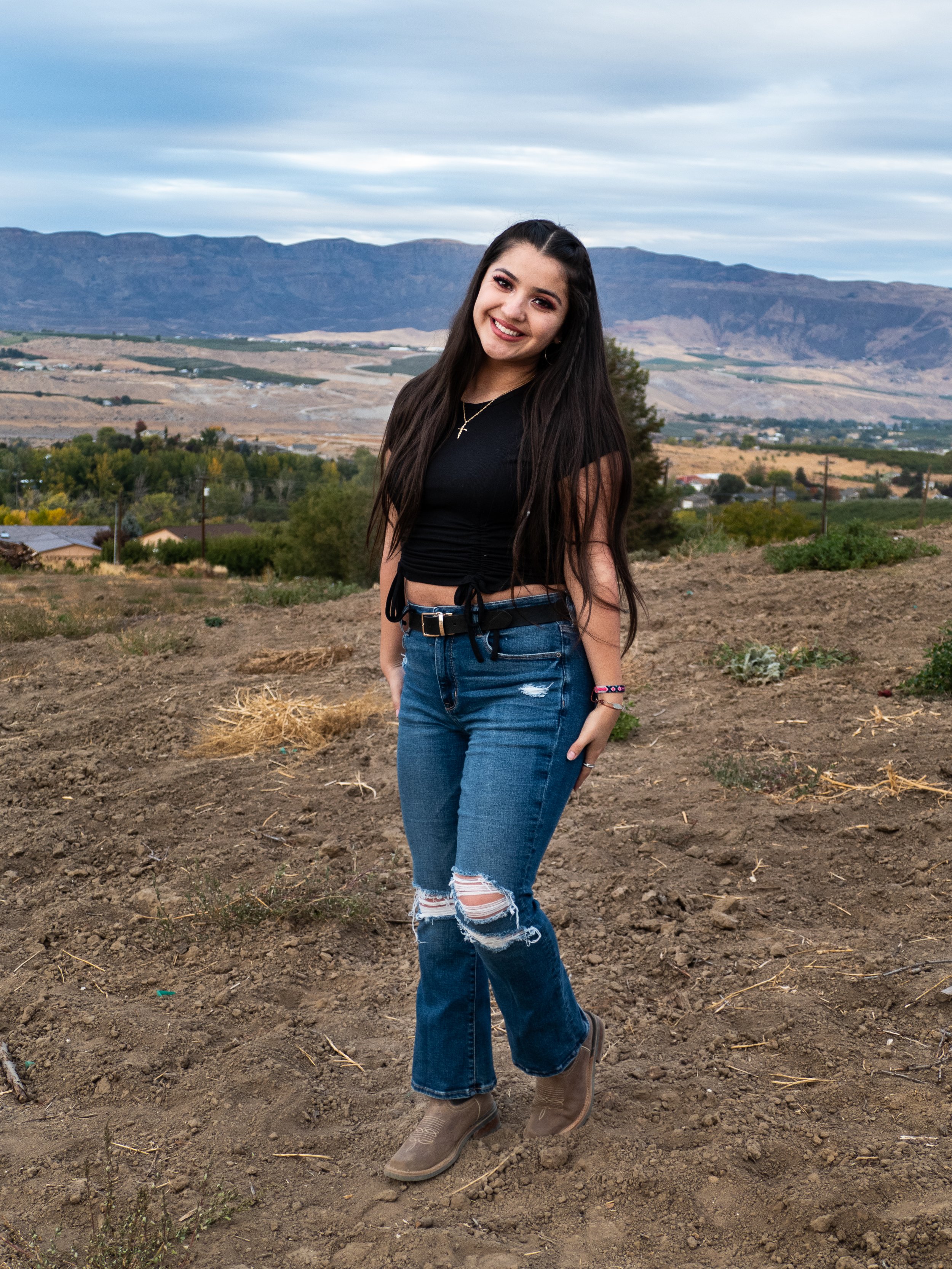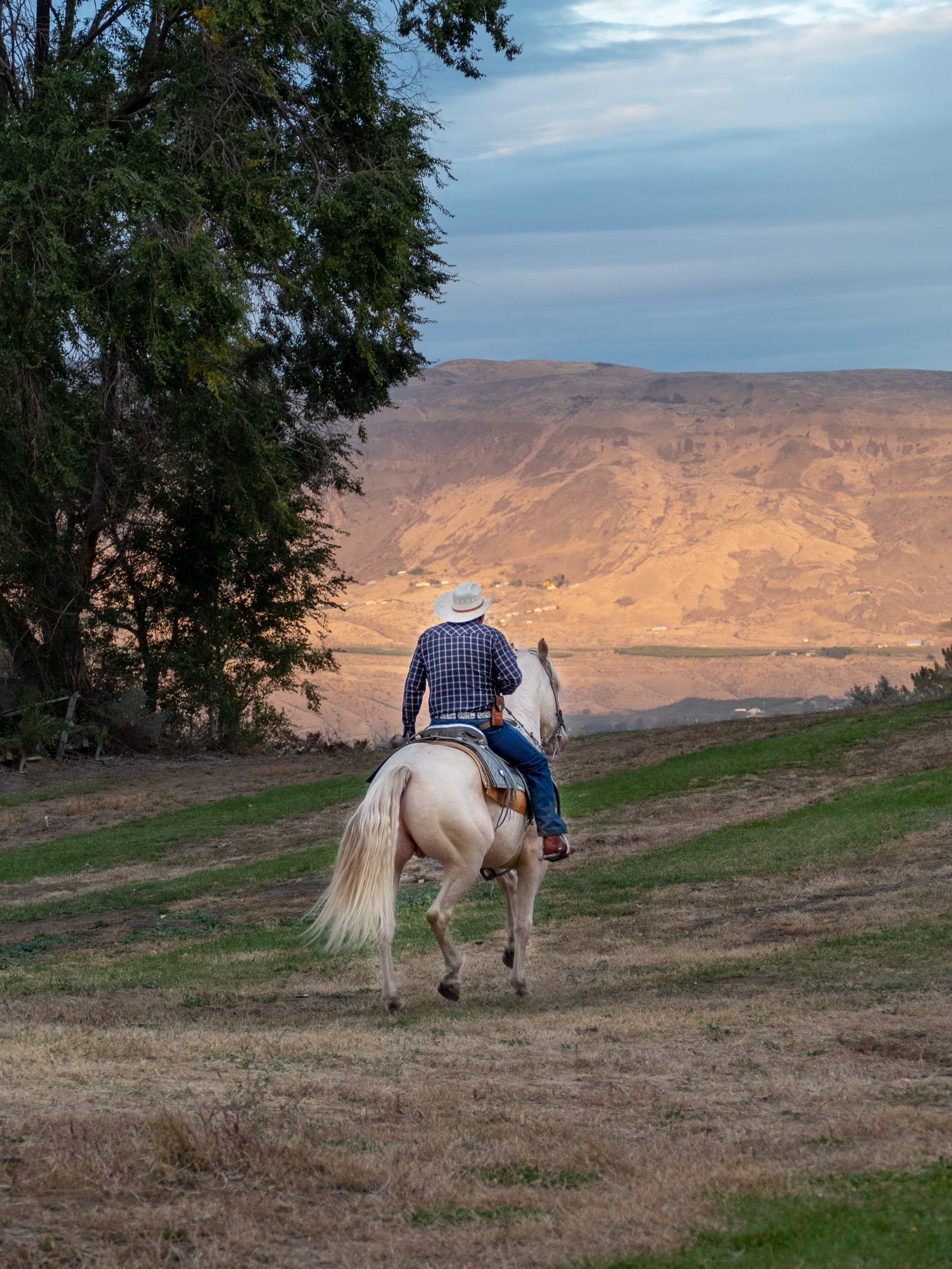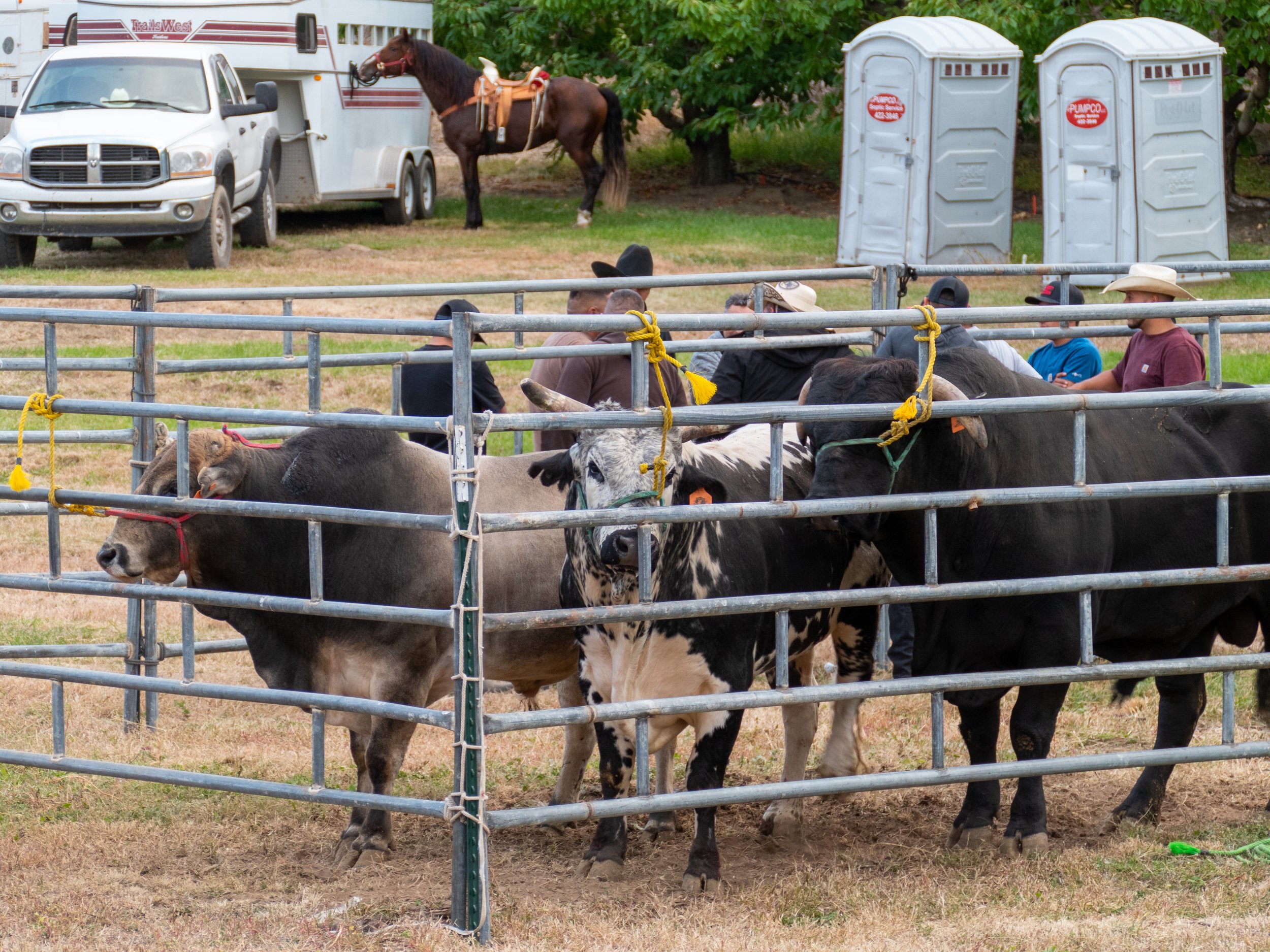Jaripeo: A Piece of my Culture
From bull riding and caballos bailadores to music and dancing, nuestra gente creates the lively environment at a jaripeo
Story by Yajaira Perez | Photos & video by Lexi Wicks | Design by Sarah Stewart
Toros. Caballos bailadores. Grupos. Bandas. This is what makes a jaripeo unique from a rodeo. Gorgeous women walk confidently with their bell sleeve blouses and flashy jewelry, while the eye-catching men wear classic button-down shirts with botínes de vaquero. Listos para la desmadre, the echoes of gritos and cheers are heard while nuestra gente dances the night away.
The clothes. The music. The history. A jaripeo is not just an event, it’s a part of a culture.
Three words to describe Yajaira Perez: outgoing, adventurous and cheerful. Having many connections at home to the Mexican culture, I proudly identify myself as Latina and Mexican. I was born in Tacoma and grew up in Puyallup speaking Spanish with my family. I am currently a fourth-year student at Central Washington University majoring in public relations. My culture strongly influences who I am as a person. Jaripeos have enhanced my love for Mexican music, dancing and making unforgettable memories with friends.
Jaripeos are strongly connected to Mexican culture and are originally found in the central and southern regions of Mexico. In Mexico, jaripeos are traditionally held in the countryside in pueblos and at ranchos. They are community events where the whole pueblo is invited and gathers for the food, live music, bull riding and dancing horses.
I didn’t grow up with jaripeos because I was never exposed to that part of my culture. Both my parents are from Guadalajara, Jalisco – de la ciudad. It is rare for jaripeos to take place in big cities. I was introduced to this environment when a jaripeo was hosted at the Ellensburg fairgrounds this past May. I had the time of my life at my first jaripeo, and I knew then it was not going to be my last.
Though jaripeos and rodeos may seem similar, they have some key differences. The traditional American rodeo includes bull riding, lasso, roping and is seen by the public as more of a show. Jaripeos consist of bull riding, caballos bailadores and live music, and they are seen as more of an event. Tickets for jaripeos range from $35 to $90 depending on the bandas and grupos on the lineup for the night.
In Washington state, jaripeos are typically hosted at city fairgrounds and ranchos: Chelan, Yakima, Monroe, Quincy, Moses Lake, Tri Cities, Enumclaw and Outlook. More common in eastern Washington, they normally start at around 2 p.m. and end no later than 11 p.m. and run from May to October. They take place in Oregon, California, Nevada, Texas, Arizona and other states with high populations of Mexicans and Mexican-Americans.
Jaripeo Durante el Día / Jaripeo During the Day
As I gently stroke my eyeshadow brush on my face and curl my long hair, it takes me two hours to get ready. I always wear my botas with red flowers, flared jeans, a cinturón and a cute blouse or a solid top. A set of gold hoops, my gold chain and my ring are essential items to my outfit. Some girls wear tejanas, or sombreros vaqueros, which is a cowboy or western hat that men usually wear.
I always go to jaripeos with my two friends, Jennifer Rios Blas and Litzy Cruz. On the day of the event, we usually get ready together and carpool. It is these moments I cherish the most – great friends with great vibes.
Arriving at the venue, field parking and dust flying in the air mixes with the smell of food. Freshly cut fries, tacos, esquites, raspados and a variety of finger foods are consistently on the menu, along with a variety of drinks: water, soda, horchata and jamaica. There cannot be a jaripeo without alcohol, but you do have to show you’re 21 and purchase and drink in a restricted area.
With the endless options of food, my appetite tends to crave a raspado de coco. This is a shaved ice with syrups and sweeteners that commonly incorporate fruits. With my treat in hand, I listen to a grupo playing lively music throughout the venue as the caballos bailadores step to the beat of the music. These dancing horses often perform at the beginning of jaripeos. The elegant horses are trained to dance by stepping, galloping and kicking in place.
Around 4 p.m. the announcement is made that the toros are ready. Everyone begins to crowd around the fences, where the bull riding takes place. Usually four to six bull riders compete for a cash prize for the winner. The anticipation grows as the first bull rider of the night gets ready. Fast-paced music picks up, and the tension can be felt in the air. This part of the jaripeo, the monta de toros, is what awes me the most.
I feel a sense of thrill and adrenaline throughout my veins. The bull rider hovers over the toros as the grupo speeds up the music, hyping up the crowd. Clenching my hands, I hold my breath as I wait. Suddenly, the door swings open. The toro is bucking. Dust blows into the air. Loud cheers lift up. The bull rider is holding on tightly, moving with the bucking toro. Screams mix with the music. A roar of cheers goes up to celebrate the bull rider’s performance. In seconds, it’s over.
Bailando de Noche / Dancing Through the Night
All this shared tension among the crowd is released once the jaripeo transitions from the bull riding to the baile. The lineup of the bandas is one of the main draws to jaripeos.
Bandas start playing live music at around 6 p.m. and people gather around the stage. Where the monta de toros once took place is usually where the stage and dancing happen. Bandas usually play a mix of slow and fast-paced music. With typically two to three bandas in the lineup, the baile lasts until 11 p.m.
The bands perform with percussion, trumpets, guitars, saxophones and other brass and wind instruments. Bandas are usually made up of groups of 10 to 20 musicians, while grupos include five to 10 musicians playing traditional regional Mexican music.
“Music in general is something I treasure dearly, but specifically Mexican regional music,” my friend Jennifer Rios Blas says. “When I can see, hear, and dance to the type of music that I have grown up listening to, it is such a special way to express myself and my culture. I see it as a huge celebration of our culture as well and being able to enjoy that with friends and family.”
The environment at a jaripeo is very welcoming. Everyone is encouraged to dance to the beat of the music, no matter your experience level. At jaripeos, vaqueros are expected to ask the vaqueras to dance with them. This is only because it is typical for men to lead the women when dancing together.
The baile is my favorite part of a jaripeo. Amongst my friends, we always dance with each other to slow-paced and fast-paced dances. All the dances are usually two-steps that may need a partner, but they can also be danced with a group. Norteñas, cumbia, zapateado, huapango and corridos are all danced to banda music.
Huapangos and zapateados are my favorite types of dancing. Both originate from northeastern Mexico. Huapangos is a simple two-step to three-step dance that involves hopping and hip movements. Zapateado has more freedom and is simply three-step stomping rapidly to the rhythm of the music.
When dancing huapangos, men usually hug the waist of the woman while holding her right hand and women tend to grab the back of their partner’s neck. With bent knees, the vaquero leads the vaquera in moving forwards, backwards and side to side, incorporating turns and hip dips. It can be danced both sensually and fast, depending on the beat of the music.
I enjoy both slow and fast-paced dancing, but I have more fun with fast paced dancing because a partner is typically not required. With my friends during zapateados, huapangos and cumbia, for example, we dance in a circle together while sharing spins. Occasionally, with other friend groups we meet at a jaripeo, we form a large circle and dance in the middle, encouraging others to join us.
At the end of the night, my friends and I share laughs as we reminisce over our time together. I know I had a great night when I leave a jaripeo with my feet aching and my botas covered in dust.
Una Conexión a mi Cultura / A Connection to my Culture
“There’s just something about dancing around many people with similar cultures to yours that makes the experience that much better,” my friend Litzy Cruz says. Going to jaripeos with my friends and getting excited during the monta de toros, enjoying the live music, admiring the caballos bailadores and dancing to traditional Mexican music is the closest thing to my home country, 2,500 miles away.
I keep going to jaripeos because I feel more connected to my culture each time I go. Being a first-generation citizen living in a predominantly white area all my life, I always felt muted and out of place – like a lost puzzle piece.
I have always loved to dance, yet had no outlet to express my love for dancing, until now. I love listening to Spanish music, yet had no friends to relate with, until now. I never felt welcomed or encouraged to highlight my culture in my environment, until now.
A jaripeo is not just about the bull riding, the dancing horses, the musicians playing live music or the dancing. It is about mi gente y mi cultura, my people and my culture.
Un jaripeo es parte de mi cultura. Una cultura que estoy orgullosa de representar y compartir contigo.
A jaripeo is part of my culture. A culture I am proud to represent and share with you.









